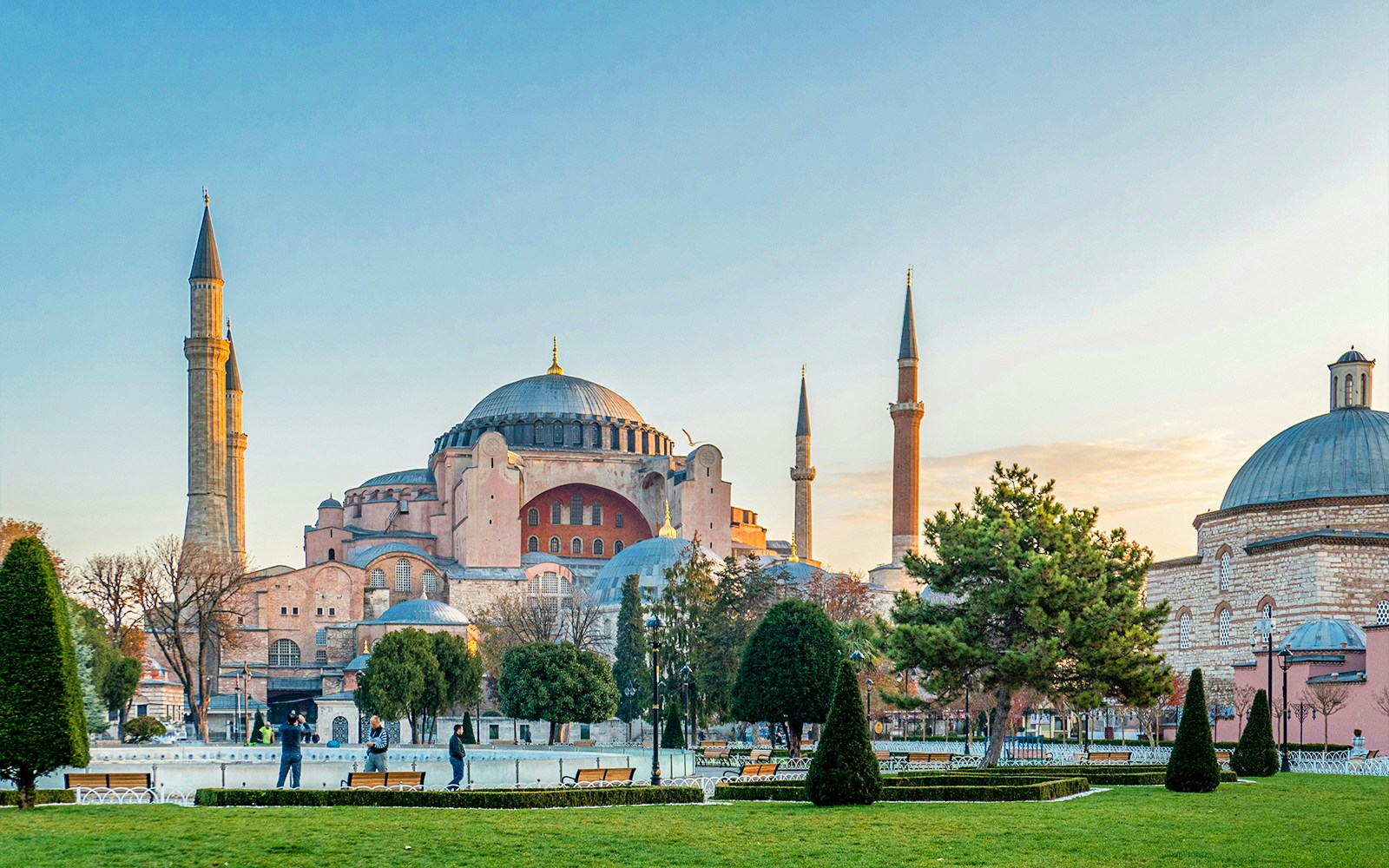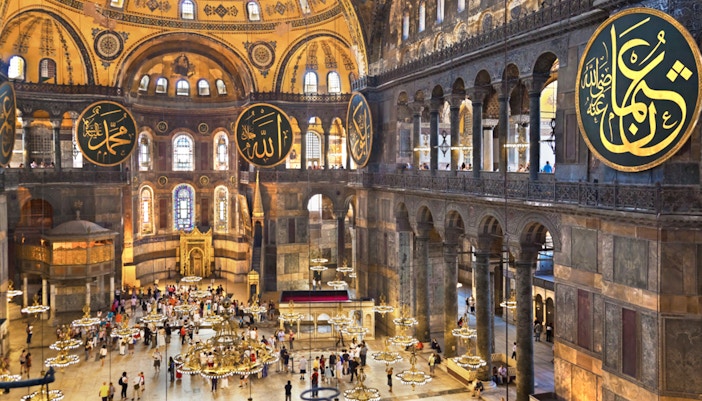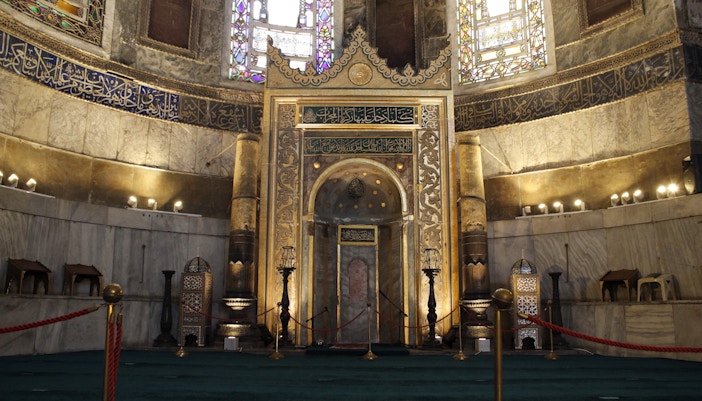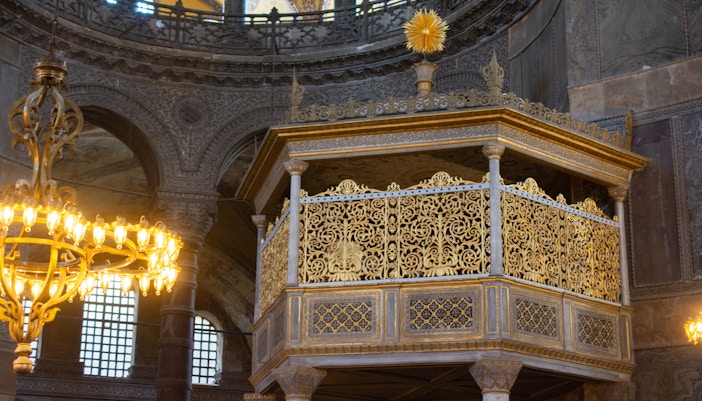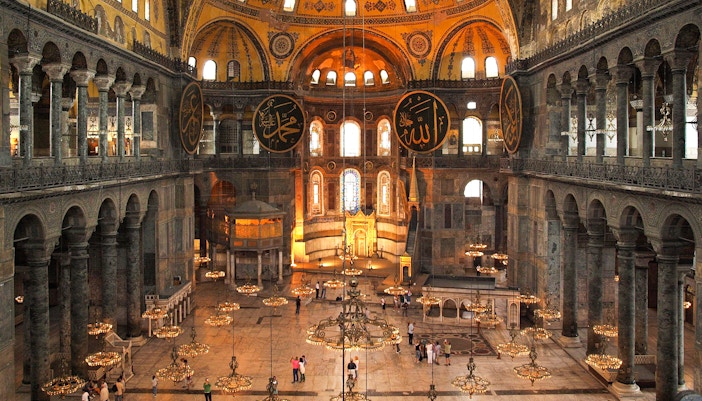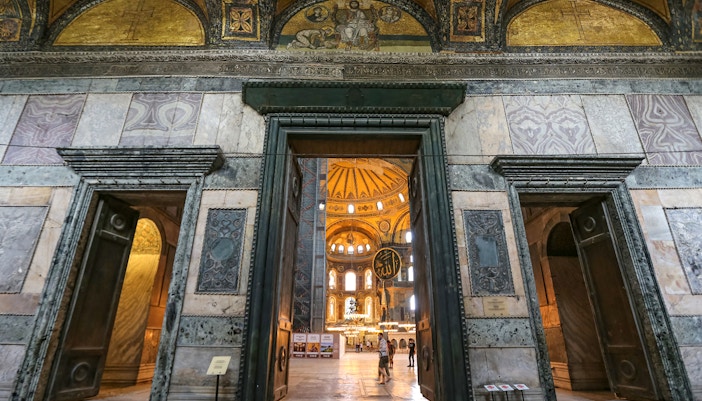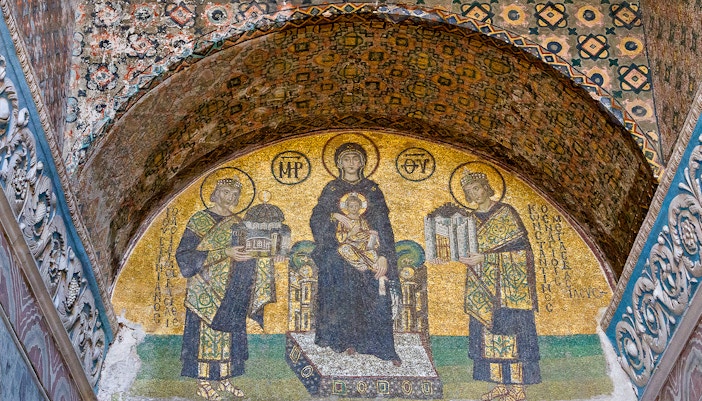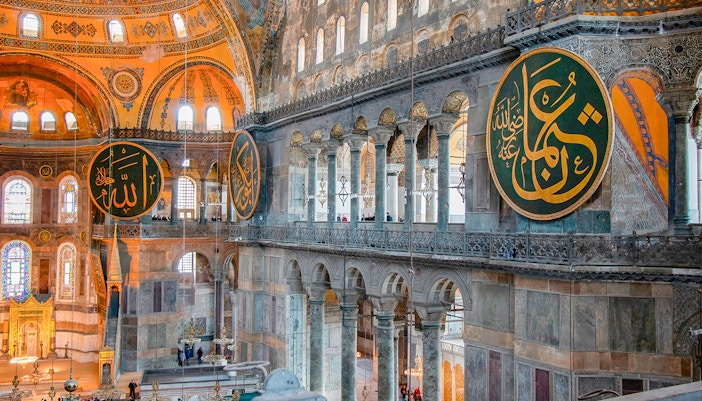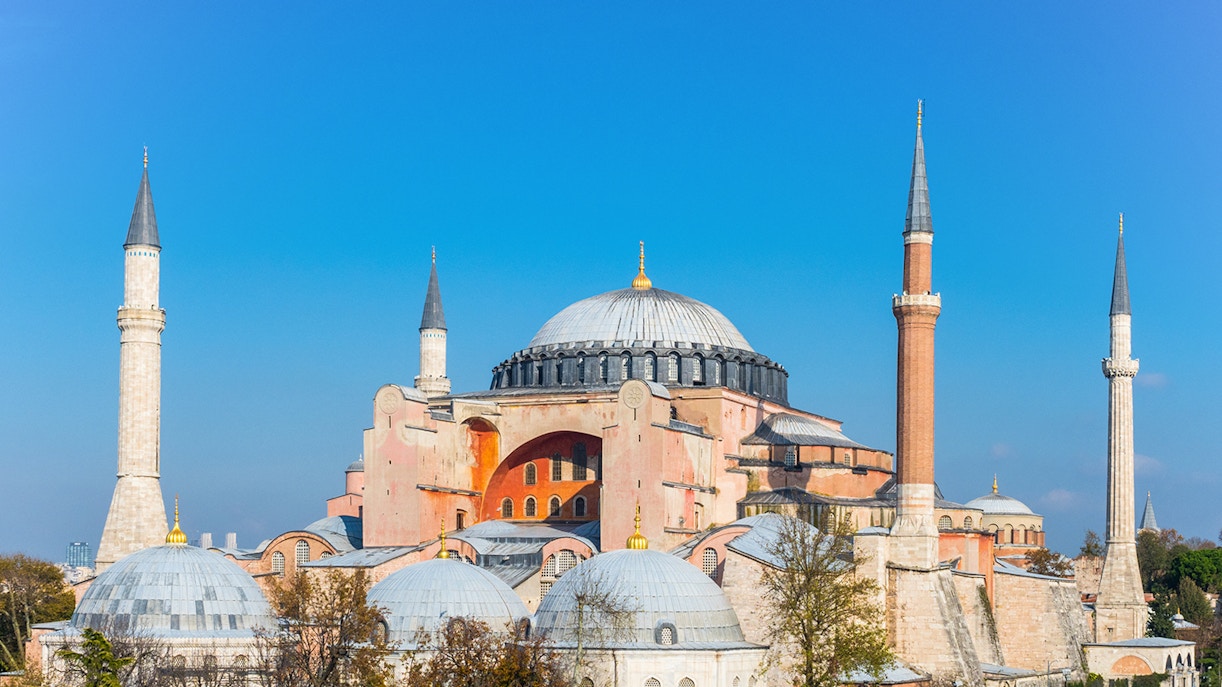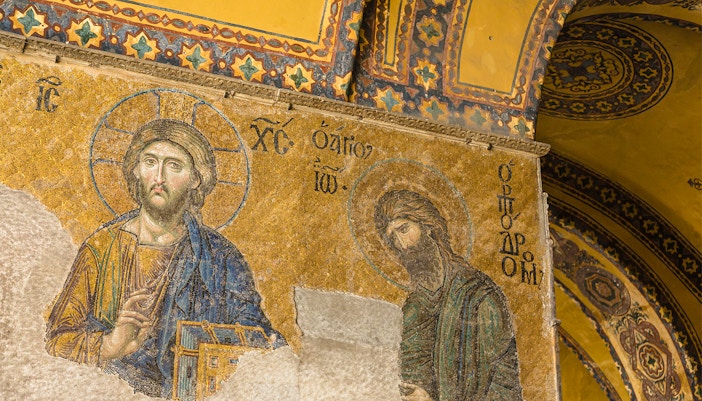- Witness architectural marvels: Hagia Sophia boasts awe-inspiring architecture, with its Grand Central Dome considered an engineering marvel for centuries. The blend of Byzantine and Ottoman influences creates a visually stunning and unique space.
- Journey through history: Immerse yourself in the rich history of this mosque, which has served as a church, mosque, and museum. Each era has left its mark, from Byzantine mosaics to Ottoman inscriptions, offering a glimpse into different chapters of human civilization on its walls.
- A bridge between cultures: Hagia Sophia's location at the crossroads of Europe and Asia reflects its role as a bridge between Eastern and Western traditions. Its architecture and history embody this unique blend, allowing visitors to appreciate diverse cultural influences.
- Symbol of tolerance: Despite its conversion to a mosque, Hagia Sophia retains elements of its Christian past. This preservation fosters interfaith dialogue and understanding, promoting a message of religious tolerance and appreciation for cultural heritage.
- Active place of worship: Experience the spiritual atmosphere of an active mosque at the Hagia Sophia. At this mosque museum, you can foster a deeper understanding of Islamic traditions and enrich your cultural perspective.

